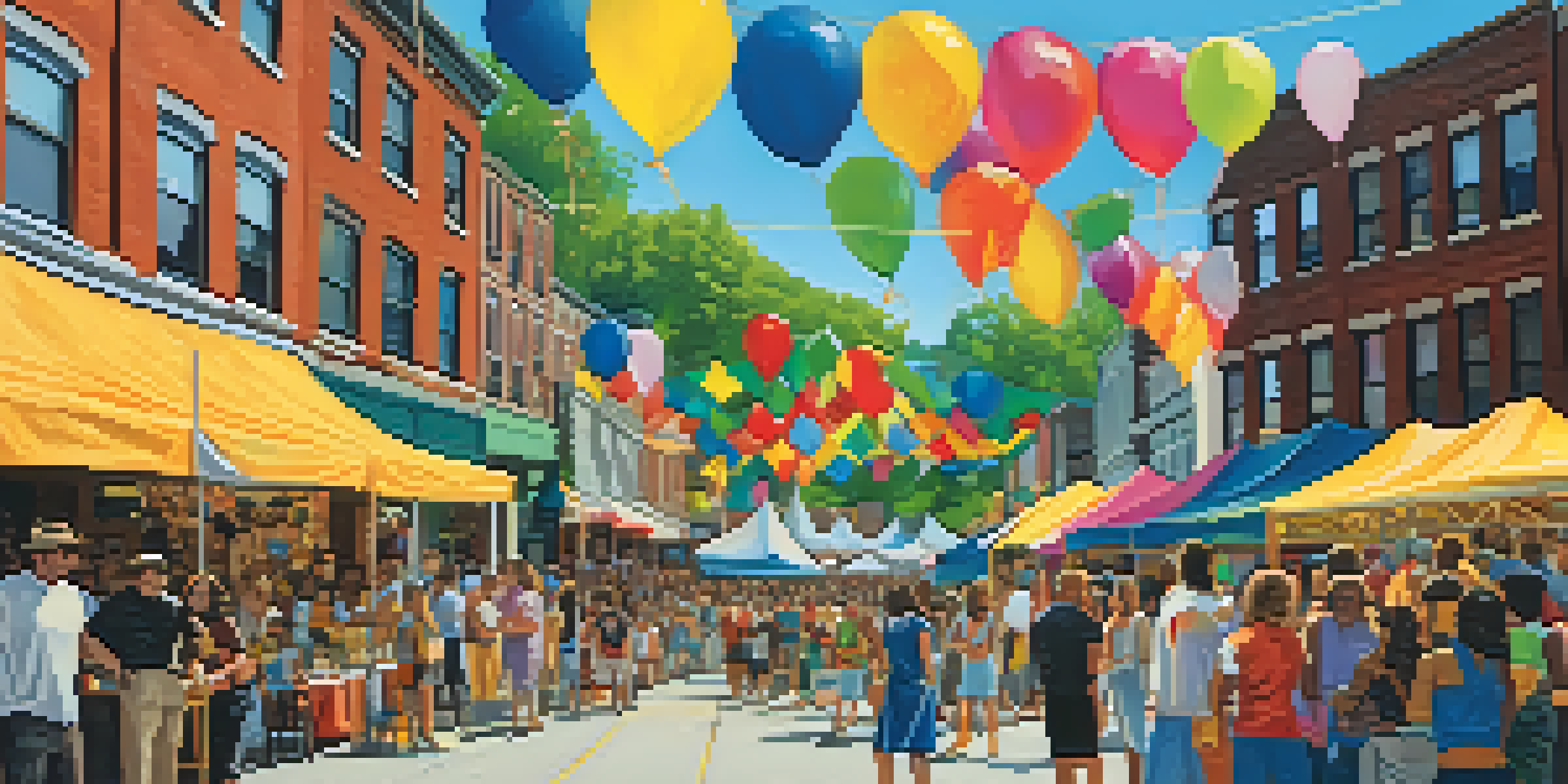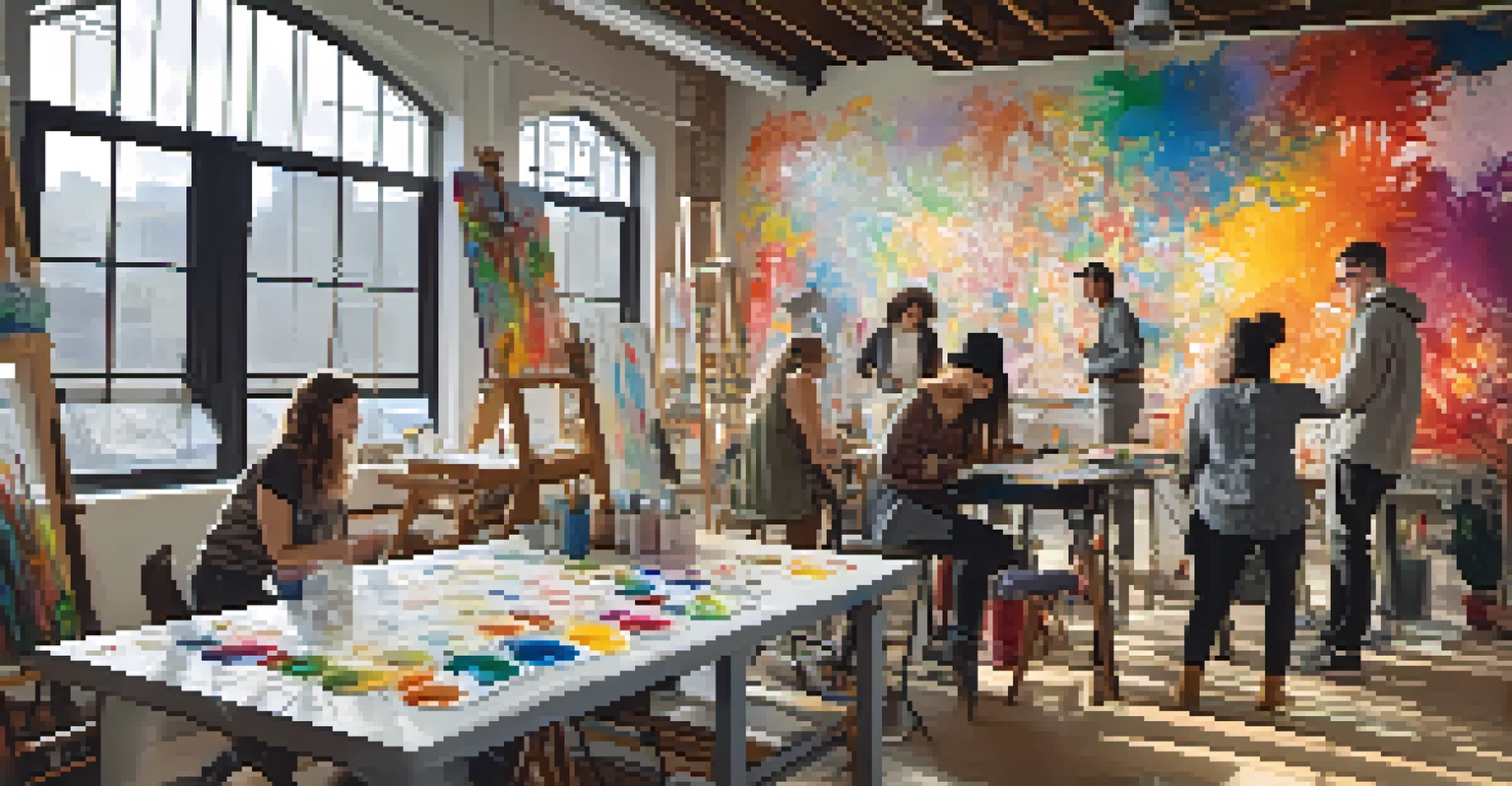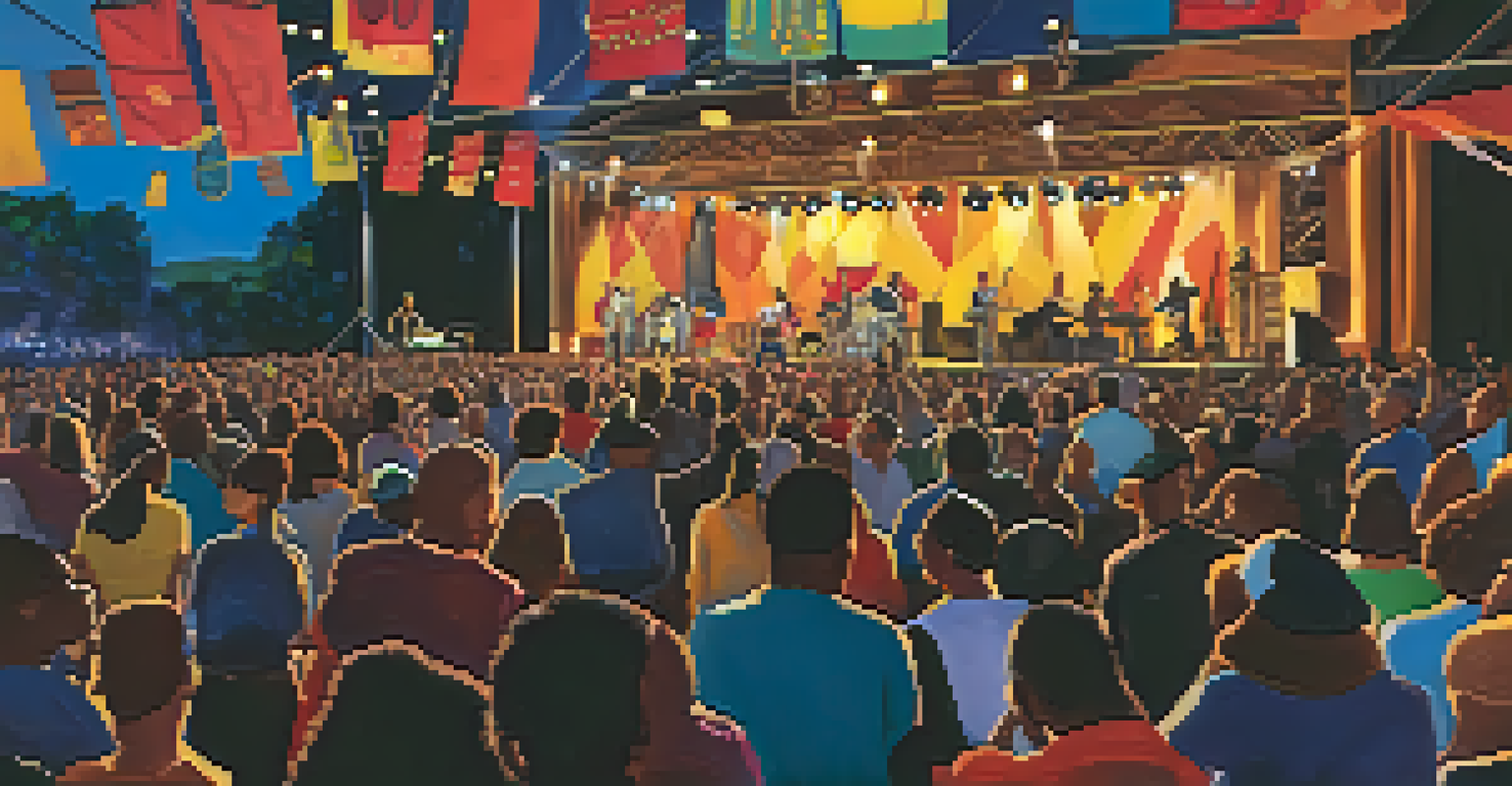The Role of Arts in Promoting Diversity in Pittsburgh

The Vibrant Arts Scene in Pittsburgh
Pittsburgh boasts a rich tapestry of artistic expression, shaped by its diverse communities. From the iconic Andy Warhol Museum to the vibrant local galleries, the city's arts scene reflects a unique blend of cultures. This vibrancy not only showcases creativity but also serves as a platform for voices from various backgrounds to be heard and celebrated.
Art is a way of recognizing ourselves and the world around us.
Throughout Pittsburgh, artists from different ethnicities and backgrounds collaborate, resulting in innovative works that challenge stereotypes and encourage dialogue. Events like the Three Rivers Arts Festival bring together artists and performers from all walks of life, fostering an environment where diversity thrives. Such gatherings not only highlight the city’s artistic prowess but also promote understanding and unity among its residents.
By engaging with the arts, Pittsburgh residents gain insight into the experiences of others, which is crucial for building a more inclusive society. The blend of traditional and contemporary art forms creates a space where everyone can find representation, making the city a beacon of diversity in the arts.
Art as a Tool for Social Change
Art has long served as a powerful vehicle for social change, and Pittsburgh is no exception. Through various mediums—be it visual arts, theater, or music—local artists address pressing social issues, including racial inequality, economic disparity, and environmental concerns. These artistic expressions not only raise awareness but also inspire action within the community.

For instance, public art installations often provoke conversations about historical injustices and the need for reform. Projects like the 'Black Lives Matter' mural in downtown Pittsburgh serve as poignant reminders of the ongoing fight for equality. Such initiatives emphasize the role of art in shaping public opinion and fostering a sense of collective responsibility.
Pittsburgh's Arts Reflect Diversity
The city's vibrant arts scene showcases a blend of cultures, promoting inclusivity and understanding among residents.
Moreover, art programs that engage underrepresented communities empower individuals to share their stories and push for change. By providing a platform for marginalized voices, Pittsburgh's arts scene cultivates a culture of empathy and understanding, essential for promoting diversity.
Cultural Festivals Celebrating Diversity
Pittsburgh hosts a variety of cultural festivals that celebrate the rich diversity of its population. Events like the Pittsburgh International Jazz Festival and the Pittsburgh Pride Parade not only showcase artistic talent but also promote cultural understanding and acceptance. These festivals draw people together, encouraging them to learn about different cultures through music, dance, and art.
The arts are not a luxury. They are a necessity for all of us.
Each festival offers a unique opportunity for attendees to engage with communities they may not otherwise encounter, fostering an atmosphere of curiosity and respect. For example, the Pittsburgh Folk Festival highlights the city’s ethnic diversity, allowing attendees to experience traditional music, food, and crafts from around the world. Such experiences are invaluable in broadening perspectives and breaking down barriers.
In this way, cultural festivals in Pittsburgh play a crucial role in promoting inclusivity. They provide spaces where diverse communities can come together, share their heritage, and celebrate their differences, reinforcing the idea that diversity is a strength rather than a division.
Collaboration Between Artists and Communities
Collaboration is at the heart of Pittsburgh’s arts scene, fostering connections between artists and local communities. Many artists engage in community-based projects that involve residents in the creative process, ensuring that diverse voices are included. This not only enriches the art itself but also strengthens community bonds.
For example, initiatives like the 'Mural Arts Program' invite community members to participate in creating murals that reflect their shared experiences and histories. These collaborative projects not only beautify neighborhoods but also instill a sense of pride and ownership among residents. The result is art that resonates deeply with the community and tells their unique stories.
Art Drives Social Change
Local artists use various mediums to address critical social issues, inspiring community action and awareness.
Such partnerships highlight the importance of inclusivity in the arts. By actively involving diverse groups in the creative process, Pittsburgh’s artists help to ensure that the resulting works are representative of the community as a whole, thus promoting a more comprehensive understanding of diversity.
The Role of Education in Promoting Diversity
Education plays a vital role in fostering appreciation for diversity through the arts in Pittsburgh. Local schools and organizations often implement arts education programs that emphasize multicultural perspectives, helping students understand the significance of different cultural expressions. These programs encourage young people to explore and celebrate diversity from an early age.
Art education initiatives, such as workshops and after-school programs, often focus on the contributions of various cultures to the arts. By exposing students to a wide range of artistic traditions, educators cultivate an environment of respect and curiosity. This exposure not only broadens students' horizons but also encourages them to embrace their own cultural identities.
In summary, educational programs that prioritize diversity through the arts create a foundation for understanding and acceptance. By nurturing a love for diverse artistic expressions, Pittsburgh empowers the next generation to appreciate and advocate for inclusivity in their communities.
Supporting Local Artists from Diverse Backgrounds
Supporting local artists from diverse backgrounds is essential for fostering an inclusive arts scene in Pittsburgh. Organizations and initiatives that focus on promoting underrepresented artists help to ensure their work is seen and appreciated. This support not only validates the artists' contributions but also enriches the cultural landscape of the city.
For example, initiatives like the 'Artists in Residence' programs provide platforms for artists of color to showcase their work and connect with the community. These opportunities are crucial for building visibility and creating networks that empower artists. When diverse voices are amplified, the arts community as a whole benefits from the richness of varied perspectives.
Cultural Festivals Unite Communities
Events like the Pittsburgh International Jazz Festival celebrate cultural diversity, fostering curiosity and respect among attendees.
In turn, when local artists succeed, they inspire others within their communities to pursue their artistic passions. Pittsburgh’s commitment to supporting diverse artists is a vital step toward ensuring that the arts remain a reflection of the city's multifaceted identity.
The Future of Arts and Diversity in Pittsburgh
Looking ahead, the future of arts and diversity in Pittsburgh appears promising. As the city continues to evolve, so too does its commitment to fostering an inclusive arts community. With ongoing support for artists from all backgrounds and the integration of diverse cultural programming, Pittsburgh is well on its way to becoming a model for other cities.
Moreover, as technology and social media play increasingly significant roles in the arts, more opportunities for diverse voices to be heard arise. Digital platforms allow artists to share their work with broader audiences, transcending geographical barriers. This shift is particularly beneficial for underrepresented artists seeking to gain recognition and connect with new communities.

Ultimately, the interplay between arts and diversity will shape Pittsburgh's identity in the years to come. By continuing to prioritize inclusivity and collaboration, the city can ensure that its arts scene remains a vibrant reflection of its rich cultural tapestry.
Conclusion: Embracing Diversity through the Arts
In conclusion, the arts play a pivotal role in promoting diversity in Pittsburgh, creating spaces for dialogue, understanding, and celebration. Through collaboration, education, and community engagement, the city’s arts scene fosters a sense of belonging for all residents. By supporting diverse artists and cultural initiatives, Pittsburgh demonstrates its commitment to inclusivity.
As we continue to embrace the power of the arts, it is essential to recognize their potential to drive social change and promote acceptance. The stories told through art—whether they reflect historical struggles or contemporary experiences—help to bridge gaps between communities and foster a shared understanding.
Ultimately, by championing diversity through the arts, Pittsburgh not only enriches its own cultural landscape but also sets a powerful example for others. The journey toward a more inclusive society is ongoing, but with the arts leading the way, the possibilities are endless.